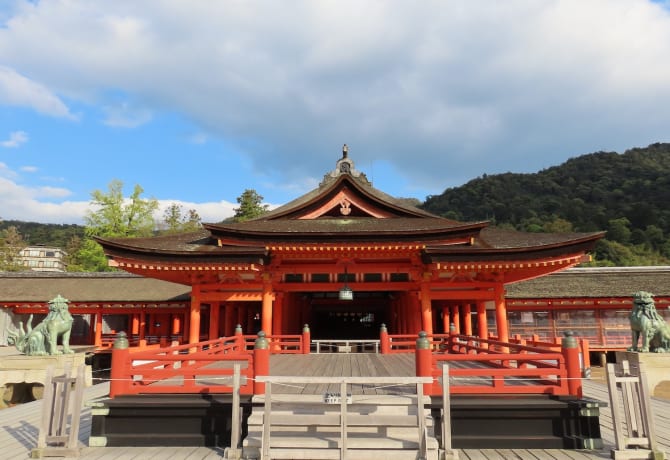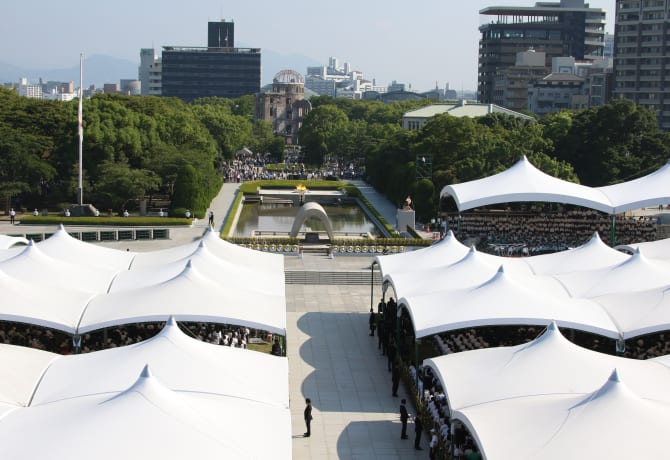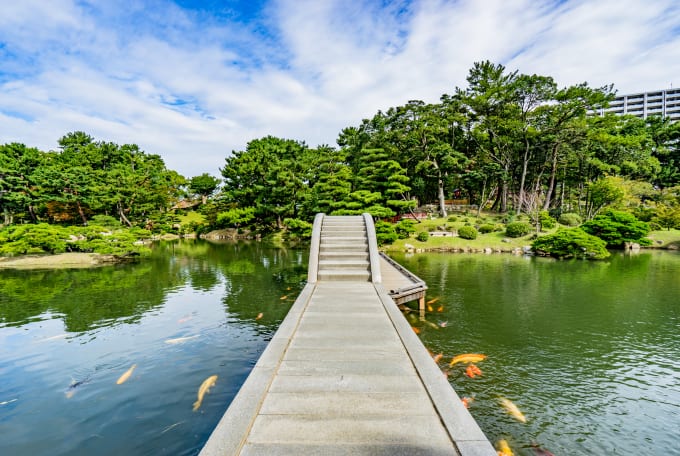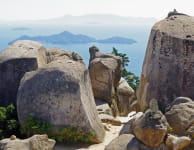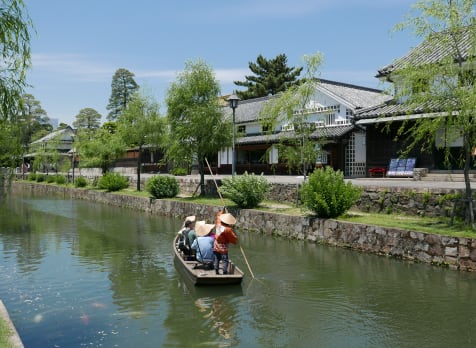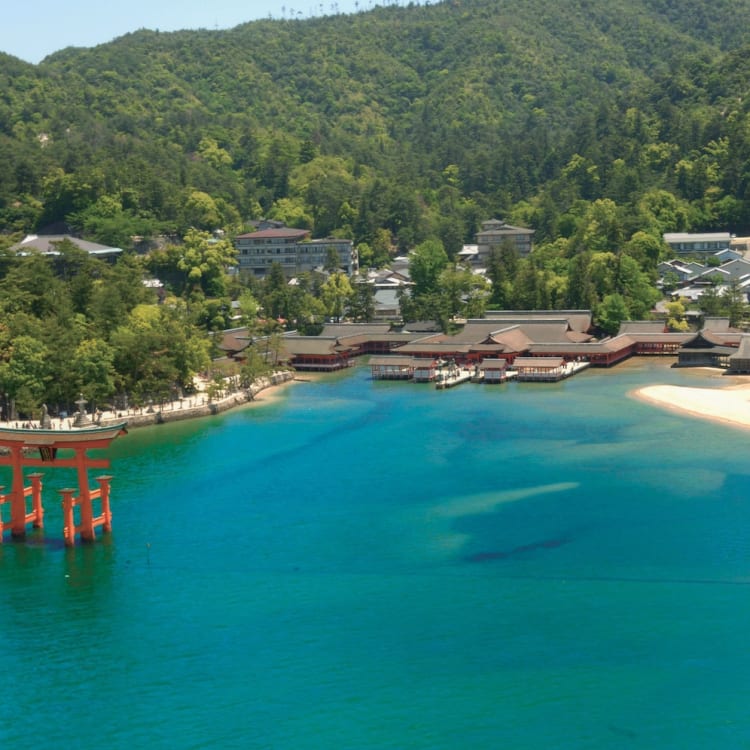

ITINERARIES Hiroshima in Autumn Visit Hiroshima's Peace Memorial and experience panoramic views of the Seto Inland Sea
Visit sacred shrines and unforgettable memorials
Highlights
- The view of the grand torii gate "floating" in the water at Itsukushima-jinja Shrine
- The thought-provoking displays at Hiroshima Peace Memorial Museum
- Trying Hiroshima's famous okonomiyaki, a hearty hybrid of fried noodles and savory pancake
Accessed by ferry, the island of Miyajima has been a sacred place since ancient times. Home to several beautiful shrines, it's an easy day trip and a must-see. The World Heritage Itsukushima-jinja Shrine, constructed around 1400 years ago, sits elevated over the water. Covered corridors connect the shrine buildings. The iconic otorii, or grand torii, gate stands further out in the bay, accessible at low tide. At night, the shrine is illuminated, giving it a fairytale appearance.
High on the hill above the island, Goju-no-To, or Five-Story Pagoda, commands views over Itsukushima-jinja Shrine and the Seto Inland Sea. Originally built in 1407 to honor the Buddha of medicine, its vivid red lacquer exterior and intricate carvings and paintings inside are enhanced by the bold reds and golds of the surrounding autumn leaves during the season.
Houkoku-jinja Shrine, with its open, airy construction, is the perfect place to relax and contemplate the seasonal colors. It is sometimes called Senjokaku, or Hall of 1000 Mats, for its vast, open floor area. Although the great warlord Toyotomi Hideyoshi started building the shrine in 1587, it was never completed, leaving it open to the breezes.
Mt Misen, the highest point on the island, has been considered sacred since ancient times. You can access the summit by the Miyajima Ropeway, which seems to float high above the island.
At the bottom of the ropeway is Momijidani Park, which has about seven hundred maple trees that turn brilliant shades of red from mid- to late-November.
From the top ropeway terminal, several walking paths take you to the main sightseeing spots.
Mt. Misen is said to be where the legendary Buddhist monk Kukai (also known as Kobo Daishi), underwent rigorous ascetic training for 100 days. It is said that the fire he lit at the time is still burning in the Reikado House after almost 1,200 years. It is also used to light the flame of peace at the Hiroshima Peace Memorial
Continue to the Shishiiwa Observatory at the summit for panoramic views of the island, 535 meters above sea level.
After heading back down the ropeway, you can either go back to Hiroshima or stay on Miyajima. There are several Japanese inns and hotels on Miyajima Island where you can stay the night. Most are located near the port area on the north side of the island.
Photo: ©Courtesy of Hiroshima Prefecture / None / ©Courtesy of Hiroshima Prefecture / None
A pretty, compact city bound by mountains and sea, Hiroshima doesn't avoid its tragic past. Instead, by honoring its heritage and embracing peace, Hiroshima welcomes visitors with warmth.
Photo: ©Courtesy of Hiroshima Prefecture
It's impossible to forget what happened to the city at 8:15 a.m. on August 6, 1945. Hiroshima was the first city to be hit by an atomic bomb, and one of only two in history. The Hiroshima Atomic Bomb Dome was directly under the explosion and has become a poignant reminder.
Hiroshima Peace Memorial Museum explores the threat of nuclear weapons with very personal reminders. Nearby, Peace Memorial Park contains the Peace Bell, the Cenotaph for the Atomic Bomb Victims, and the Children's Peace Monument. The park employs a stark, modern design to commemorate the tragic events and advocate for a nuclear-free future. A memorial ceremony is held in the park on August 6 every year.
Shukkeien Garden, created for the Daimyo of Hiroshima in 1619, was designed by tea master Ueda Soko to resemble real scenery on a small scale. Stroll around the pond, dotted with tiny islands, and relax at thatched tea houses. Visit during the Maple Leaf Festival in late November, to experience the vivid foliage at its best.
A short walk brings you to Hiroshima Castle , built in 1599. Although it was destroyed during WWII, it has been faithfully restored to its original grandeur. The castle now houses a museum with historical artifacts from local samurai families.
Okonomimura Village is just a few minutes from Hiroshima Station by streetcar. The area specializes in Hiroshima's soul-food: okonomiyaki . Initially, the area was filled with small street vendors. Now, you can explore around 25 restaurants in one location, each with their own take on the dish.
Bold, brash and friendly, Osaka is known for its foodie culture and outgoing locals. Just over an hour from Hiroshima by shinkansen, the city offers a blend of shopping, historic sites, and popular amusements.




























































